It’s been 12 months since we last reported on the Nub Tub. Since then, Jack has put a sizable dent in the Long Reef kingfish population and Alli has been working on her long, sun-kissed locks. The salty duo even made it wide to the tuna grounds, but ended up drowned rats with no sushi in sight.
SO, WHAT DID WE GET RIGHT IN THE NUB-TUB BUILD?
We first flirted with a 445F because of its reputation as an exceptional ride. And we haven’t been disappointed, especially when this pocket rocket gets up on the plane. However, just before the plane is another story. We’ll get to that. The ride we’re gloating about is enhanced by the commercial-grade construction built in by the crew at Whitepointer Boats. For those who haven’t been following the tale of the Nub Tub, she features a new laminate inside the hull. After removing the old timber and grinding back the glass, Whitepointer’s Erick Hyland hit the tub with a gun pass of 600g, two layers of 800g rovings overlapping at the keel, another layer of 800g roving over the top, then dusted with a light layer of chop strand in between.
For a bulletproof finish, Erick hit it with a final gun pass of 600g chop over the top. In some areas, it’s now double the thickness of the original glasswork. The stringers — borrowed from Whitepointer’s 5m Super Hornet moulds — are C-shaped, forming a full box section when glassed in. They’re made up of five layers of fibreglass using 800g roving and 600g chop.
The floor is constructed of 13mm Thermo- Lite and the casting deck is beefed out to 19mm because of the large hatch that sits in the middle. Both sheets are glassed top and bottom. The transom was rebuilt by Josh Hammond from Ocean Custom Marine. It features 19mm heavy-duty Thermo-Lite board, doubled in thickness in some sections. There’s also a new well to fit around the 1.5L motor and a couple of knees (gussets) tying the well to the floor. Some will say we should have done the transom before the floor, and attacked it from inside rather than outside — but it’s rock solid with no cracks to be seen.
Josh did an exceptional job. He assures us there are many ways to do transoms — well — and that the moderators of old-school boating sites need to chill. We sure hope it ends up better than the transom of another well-published media project boat, which abandoned ship, falling out not long after the restoration. The top deck is glassed to the hull all the way around, and in the guts lies a 117L fuel tank built by McQuarries Fibreglass & Stainless Steel. Power comes from a DF100B Suzuki outboard. At just 161kg, it’s the lightest in its class. It shares the block from the 70/80/90A, but features a new computer (ECM), a new wiring harness and additional features including a system to detect water in the fuel.
Efficiency-wise, Jack usually runs the 30nm from Bayview to Long Reef and back, using around 25–28L. A full day’s game fishing chews 60–80L, which still bewilders us at the bowser. Rigging was sent through the floor in the console, down through the stringer then up alongside the well at the rear. As it passes through the floor, there’s a raised 90mm glass pipe to prevent water ingress. There’s no tube in the stringer — we figured water would get in there anyway and didn’t want the tube to act like a sump and hold on to the stuff. It looks as good as it goes. After much speculation on the colour charts, we settled on light ivory in the Altex range. Those pavlova tones are set off nicely by the black trim and hatches, and the customised Reelax stainless rod holders. To make the holders fit on the narrow gunwales, the flange was ground down and repolished.
DIGITAL DREAMS
Did we say this was a project boat for a media company? Yes we did. Appropriately, we’ve totally overcapitalised in the digital department. It’s so bloody big, we didn’t even need a perspex screen above the console. Jack says the Simrad NSS16 evo3 has been faultless. It’s mated to a throughhull SS175HW transducer and once it’s got hold of the bottom it won’t let go until we drop over the shelf. It can read bottom at all speeds up to max — 36 knots. There’s an autopilot and a JL Audio system that punches well above its weight considering there’s only a single pair of six-inch speakers. We put this down to the confines of the console amplifying the beats and the quality of the gear. It’s head and shoulders above Fusion. Everything is managed through the 16-inch display that can run multiple screens including stereo and autopilot. In small boats, we’ve concluded one big screen is the way to go. Power is fed by a couple of M50 batteries. Starting to feel a weight issue?
TRANNY STYLIN’
The Transtyle alloy trailer was the first part replaced on the Nub Tub all those years ago. It’s an AT1700 model with oil-filled bearings and rubber torsion axles. Size-wise, it’s overkill, but in our experience trailer failures occur when you start testing the weight limits. Bearings are usually the first to go, followed by cracked rollers and axles. Hell knows how many times it’s been rolled in and out of different factories and different garages. You want a trailer you can easily wrangle around the yard then hitch up and travel 500km for a new paint job like we did. The other thing about a well-balanced trailer is that it supports the hull shape when you grind its guts out. For launching, all Transtyle trailers achieve a good compromise between grip and slip. It never gets away from you, but nor do you ever have to wrestle it off. But it pays to tighten bolts, as things move around.
SHOUT OUT
Boat builders take great pride turning drums of resin and mat into boats. We didn’t achieve those lofty heights, but we can stand back and admire this original and very collectable fourfie, knowing it shares plenty of our DNA. Of course, it’s not just our DNA between the layers. A huge shout-out to the good folk who helped make it happen.
TOP DECK
We reckon Eva flooring is the best thing made for boats since pie warmers. The stuff covers about 60 per cent of the visible part of the boat, so we thought we’d better make it count. Jack says it was “a game changer” once fitted to the fourfie. It reduces risk of slipping when lunging for the gaff shot, reduces the fatigue from continual pounding, reduces heat from the sun and deadens noise. So, which one to choose? We reached out to the crew at Deck Armour. Steering the ship out of Redland City Marina on the Gold Coast are brothers Joshua and Kristan Goodvinn. They’ve got a background in sign writing and a reputation for sweet designs. As we discovered, they’re also perfectionists on the production side.
Deck Armour material has been developed over a number of years, and the boys reckon 8mm, one of the thickest available on the market, is the optimum size. The man on the tools measuring out the Deck Amour for the Nub Tub is Shane Paton. His background is furniture design, so he knows how to dress a boat properly and you can’t fault his logic: “You spend all this money on the other part of the boat, why wouldn’t you make your floor look amazing as well?” Our vibe for the Nub Tub was retro, which suited Shane. He’s an acid house dude and can still rock some moves on the dance floor. He showed us. But back to the Nub Tub flooring — here’s how it works.
STEP 1 – CUSTOM-CRAFTING THE TEMPLATE
First step is creating a pattern using a plastic material called PatternPRO. Shane lays the clever stuff over the floor, making sure its smooth and relaxed, then outlines the template with a permanent marker. That allows him to get the radiuses and “unnatural” shape of the boat, because in his words, “no boat is symmetrically perfect.” It’s a slow process, Shane running his hands over the boat, marking out the radiuses, hinges, hatches and curves. “All the hard work here translates to the finished product,” he says. After templating, the PatternPRO is rolled up and post-packed to the head office. “It’s designed to be non-stretch and non-tearable,” Shane says. “It can be folded, scrunched up and transported. It allows us to get millimetre-perfect templating and also to pull a full digital proof from it.”
STEP 2 – DESIGN & CUT
Back at the factory, the PatternPRO template is laid out and measured by hand, using a computer pen. The dimensions are inputted to a CAD computer program then Josh gets to work on the design. We chose natural teak for the tub, a traditional look that would work well with the pavlova colour scheme. Josh says it’s one of the most popular colours, alongside the slate grey and charcoal. We kept the designs low-key — just The Captain logo and the parent company business logo, Moby Dick Content, as well as two 1m fish rulers. We figured we’d have more room to get crazy with design on the Shark Cat.
After design is signed off, the closed-cell Eva sheet is fed into the CNC machine, where clever little blades get to work cutting in the shapes and logos. The two-part colour scheme is created with the dual-tone sheet — in our case, teak on top and black underneath. The teak level is cut away to expose the black layer underneath. After cutting, it’s cleaned, rolled up and sent back to Shane for fitting in the Nub Tub.
STEP 3 – FITTING THE FOURFIE
“There’s a real chemistry to adhesion,” Shane says. To achieve the perfect bond, he sands the flow coat back with an orbital sander, removing the waxes, then wipes the surface clean with acetone. Peeling the Deck Armour from its adhesive backing, he positions it in place. It’s not one big section, rather a handful of large sections with smaller pieces for hatches and side pockets — that way it can be neatly spaced out. The channels between sections also allow drainage for water. If Shane doesn’t nail the positioning first time, the section can be pulled up and started again.
It doesn’t fully bond until pressure is applied, which he does with a floor roller. There’s also a bit of stretch and compression so the sheet can be manoeuvred into place. The end result is a masterpiece, which transforms the tub from tidy project to showstopper. Shane wipes his brow and leaves us with a word of a warning. “Like anything on your boat, you need to care for the floor.” We’ll cover that in an upcoming issue, once we finally spill some tuna blood on her.
THE HONOUR ROLL
Whitepointer Boats, especially Wally, who would spend a day on the Whitepointer tools then saddle up for The Captain after hours. He excelled in fabricating parts to fit, as well as general boat-building nous. www.whitepointermarine.com.au
Ben from Johnson Bros. Marine came to the party when others left us high and dry — er, actually our fault for ordering a motor about three years too early. We entrusted Tim Goozee to drill the transom and console then fit her up. We’re glad we did. www.johnsonbrosmarineservices.com.au McQuarries Fibreglass & Stainless Steel for the 117L stainless fuel tank. Kane McQuarrie is a super-nice bloke with stainless smarts and the scariest pair of rottweilers we’ve met. www.mcquarries.com.au
Josh Hammond from Custom Ocean did the less glamorous work, rebuilding the transom layer by layer then prepping the hull with epoxy fillers, Altex barrier primers (over the repaired sections and raw gel coat to seal), Altex high build and Altex epoxy undercoat. The two-pack glass topcoat was sprayed on by King Smash Repairs. It was a struggle at times competing with Josh’s other business interests, including his superyacht customers, but we’re glad we invested the extra time and money into paint preparation.
Deck Armour Josh and Kristian Goodvinn for coming to the non-slip party, and Shane Paton for the measure and fit. Supreme service and finish from the boys. www.deckarmour.com.au
SO, WHAT WENT WRONG
OK, so we got greedy. Put simply, the whole boat is too heavy. It’s no single thing, but a series of offending fatties, including the glass-rich lay-up, horsepower-hungry Suzuki (while relatively light in its competitive set, it’s still 160kg), the excessive digital gear and autopilot, and the voluminous fuel tank. Compounding the weight issue is that most of the offenders sit aft, including the set-back console, which includes a lot of running gear. At the recommendation of Ben Johnson from Johnson Bros Marine, we fitted a Permatrim. Until now, we always thought these whale tails were for underpowered pigs, but the improvement in performance has been dramatic. The Nubster planes at lower speeds and when washing off speed at the higher end, the Permatrim helps hold the boat on plane for longer. This comes in handy when working up and down big swell. A bloody big tick for Permatrim! There’s another easy fix for trimming out a 15ft boat. Hoo-mans. Just add one on a bean bag in front of the console. You might want to give them a spray jacket when the sea gets angry.
OUR 20 FAVOURITE BOLT ONS
01 Lightweight DF100B Suzuki.
02 The Permatrim — a surprise ride enhancer.
03 The 16-inch Simrad — multifunctionality at its finest.
04 Bean bag — simple, effective, beautiful.
05 Custom Reelax rod holders — slimmed down to suit.
06 Thermo-Lite — OK, it was glassed in, not bolted on, but you get our drift.
07 Viking Board hatch covers — tough, light, workable.
08 Transtyle trailer — overkill done properly.
09 Silky smooth SeaStar steering.
10 Pop-up cleat at the bow.
11 Customised stainless bowsprit.
12 Stainless Splashwell drain plugs — sweet finish, oh so much better than plastic and well worth the few extra dollars (Cat no.13800 from Whitworths).
13 Deck Armour — the best thing since pie warmers!
14 Haines Hunter vintage decals from eBay.
15 Design-yourself rego stickers from www. boatstickers.com.au
16 The 445F numberplate — her crowning glory.
17 Black hatches — so much cooler than white, but not actually cooler in summer, and a shame they’re not actually waterproof.
18 Bait tank built by Darren Higgins — every 445 needs one and your live bait will thank you, just before you pin a 6/0 through its snout.
19 We couldn’t live without the casting deck, either, but not for casting. It’s a storage saviour.
20 JL Audio — makes even Taylor Swift sound cool when you’re cruising through four-knot zones.
10 THINGS WE’LL DO DIFFERENTLY NEXT TIME:
01 Finish the boat before we buy the motor and electronics.
02 More frugal lay-up — this thing is built like a Whitepointer 263.
03 Not run the console so far back.
04 Paint finish in gelcoat — bags not sanding.
05 Dry-fit all components before final painting.
06 Smaller fuel tank — 80L sounds about right, considering you can’t use more than 60L in a day.
07 Bigger anchor well — we’re currently running a miniature plastic anchor with 30m of rope. It gets by, but we’d never hold in the deep.
08 Cleats on the rear to tie off — not too late for that one.
09 Toeholds under side pockets — shoulda, woulda, coulda.
10 Move the batteries underneath the casting platform — and maybe throw on a Minn Kota?






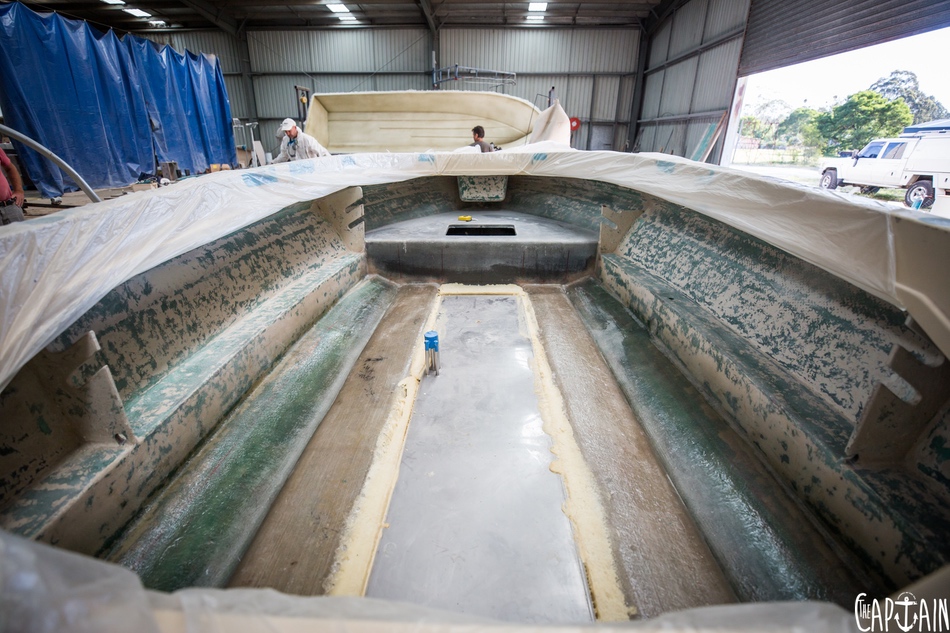
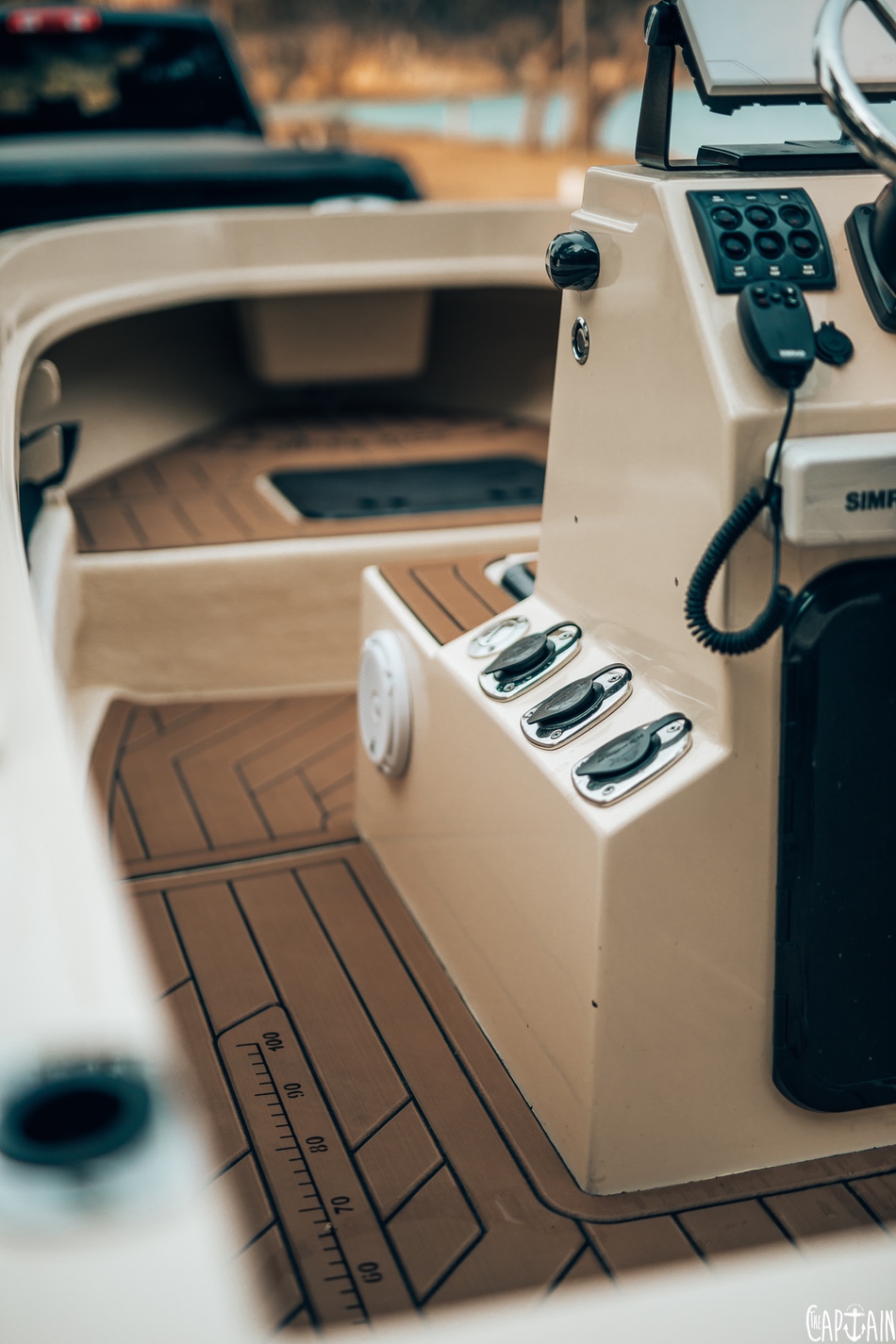



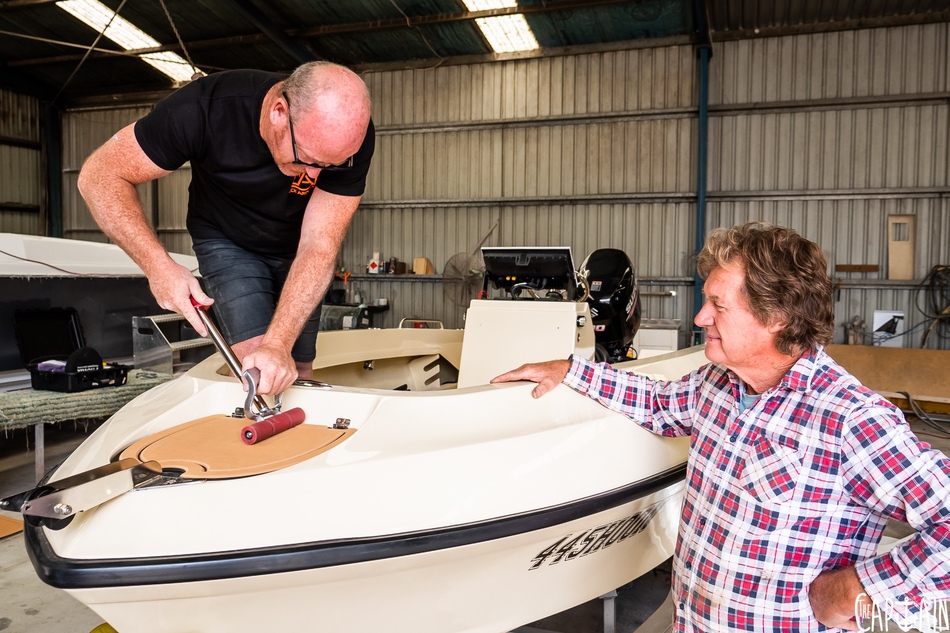
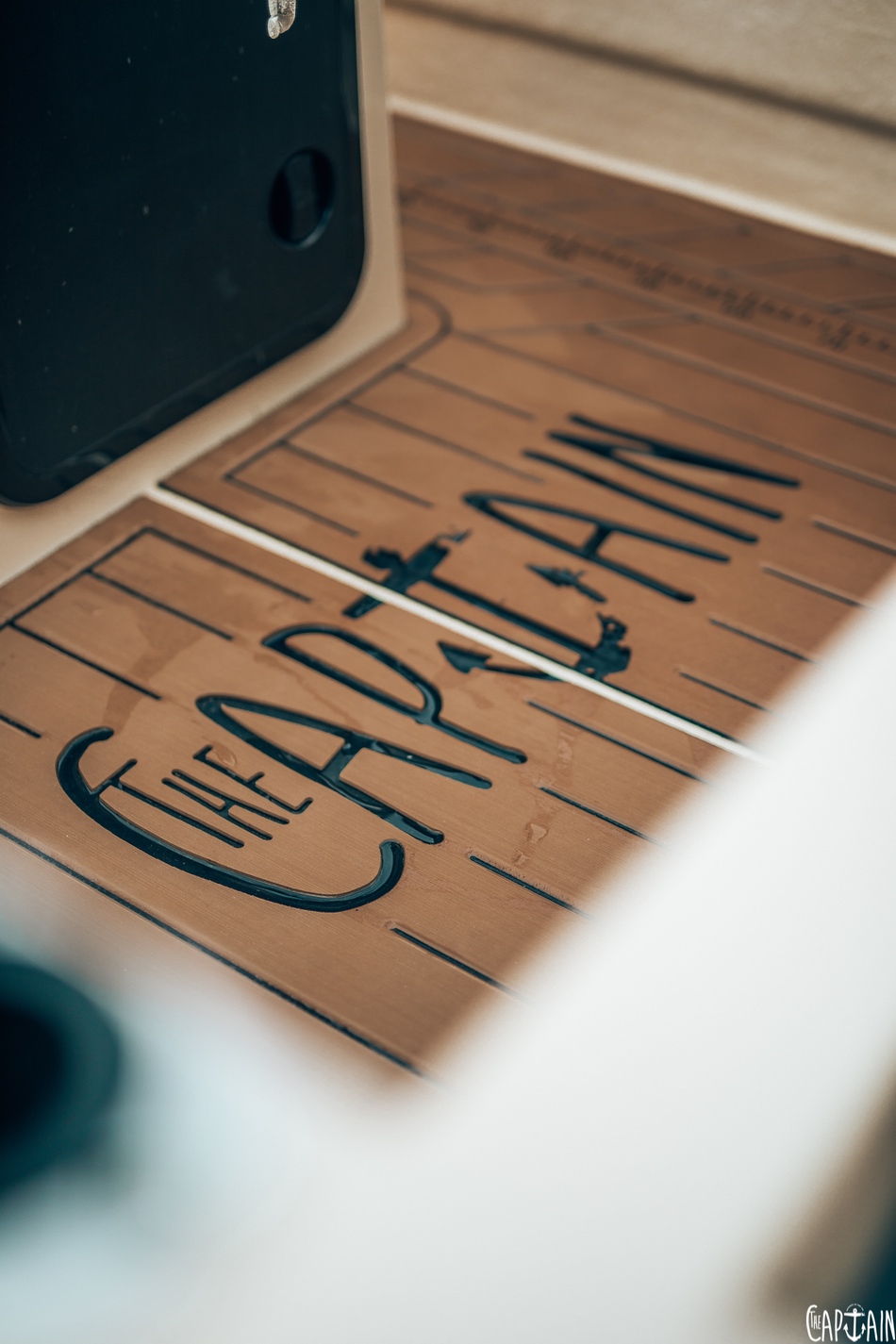
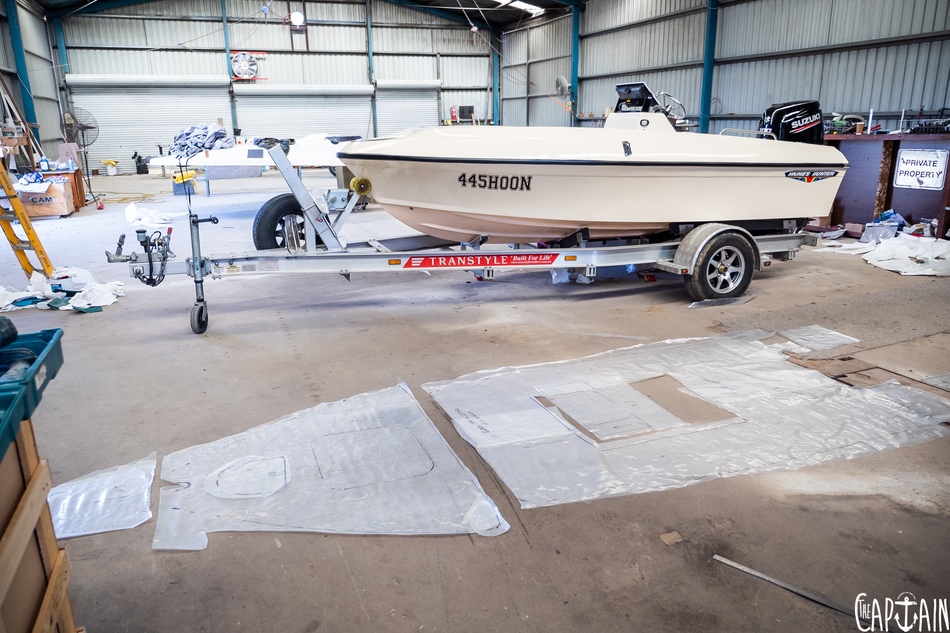
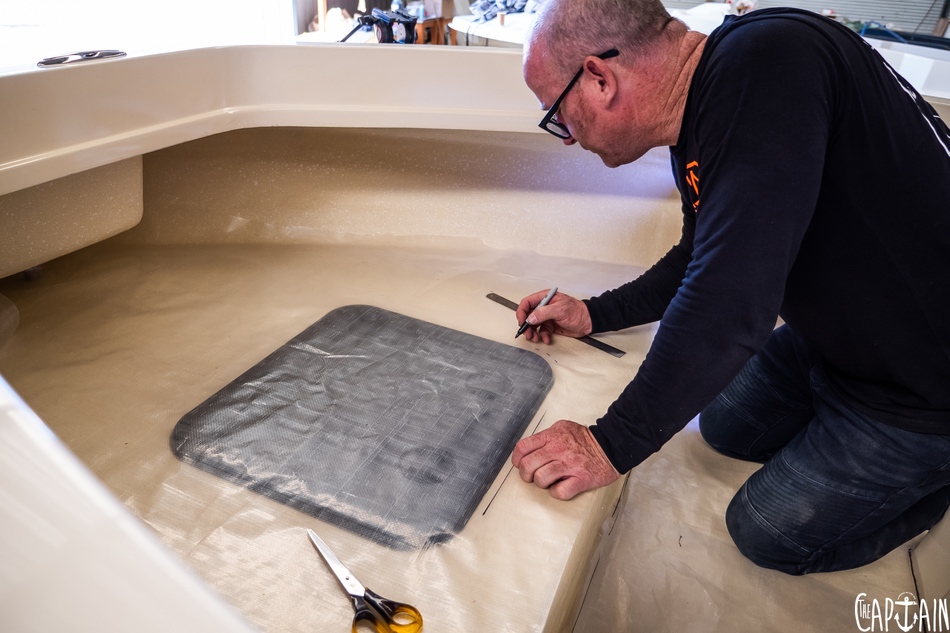
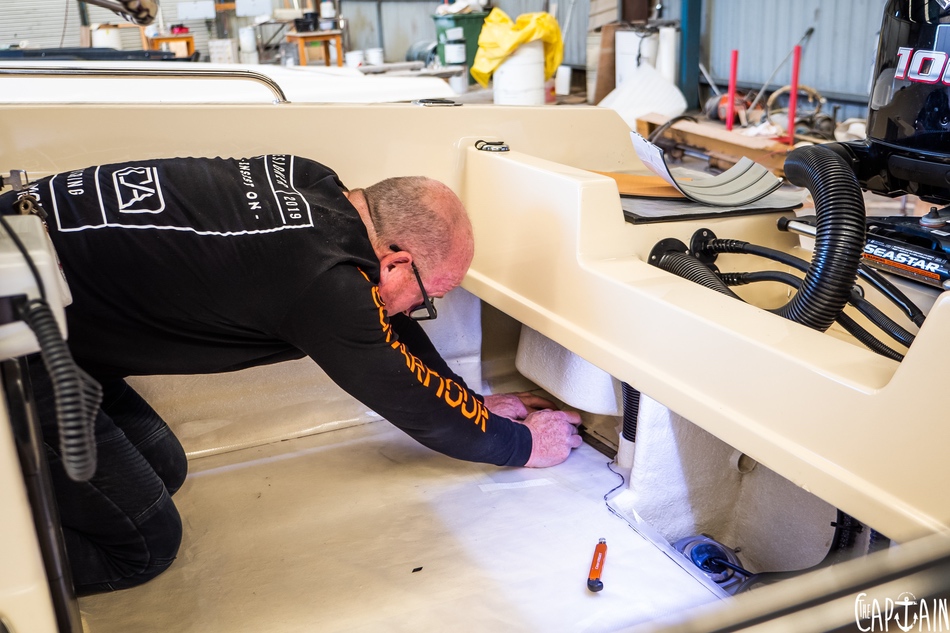
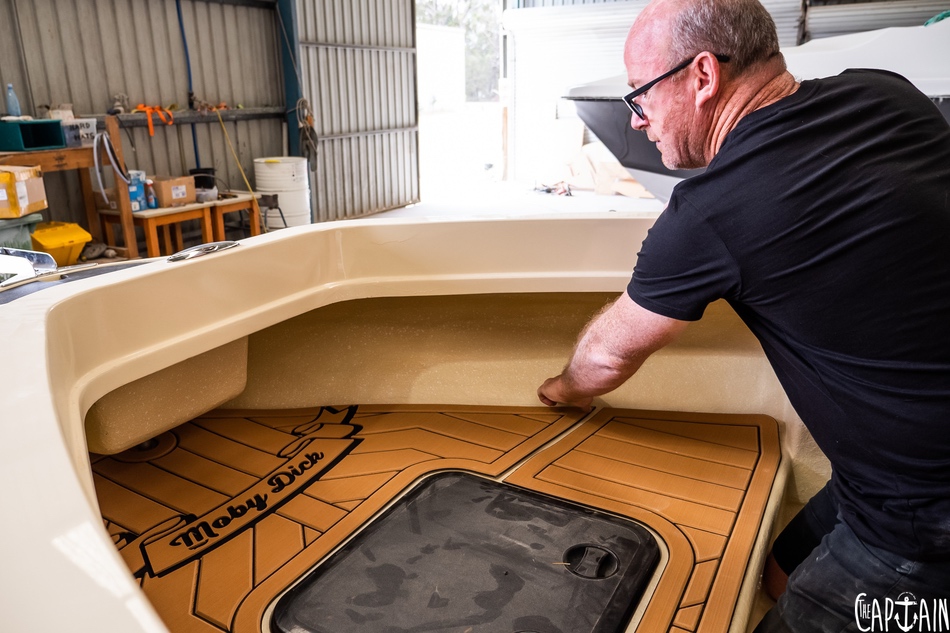
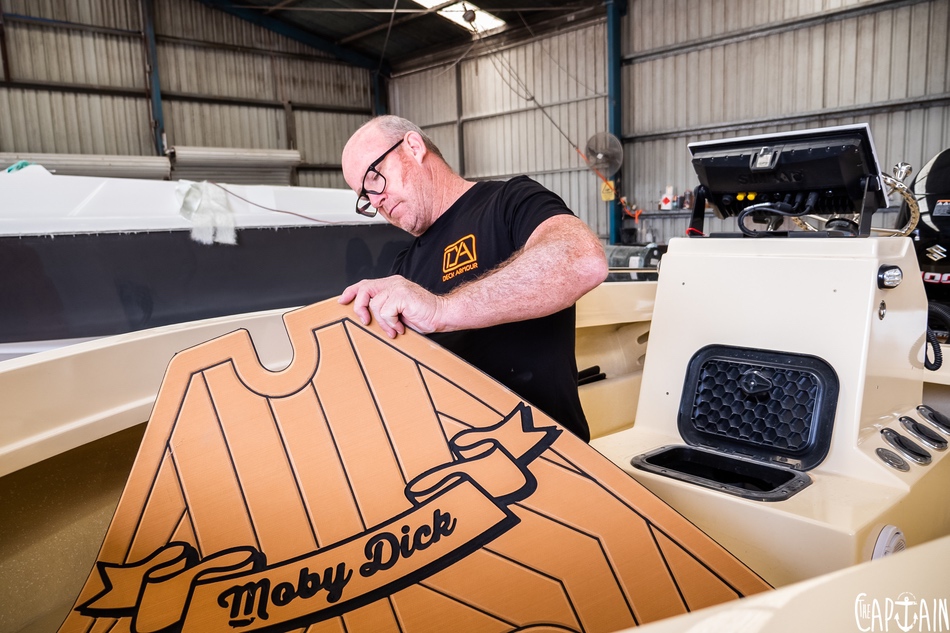



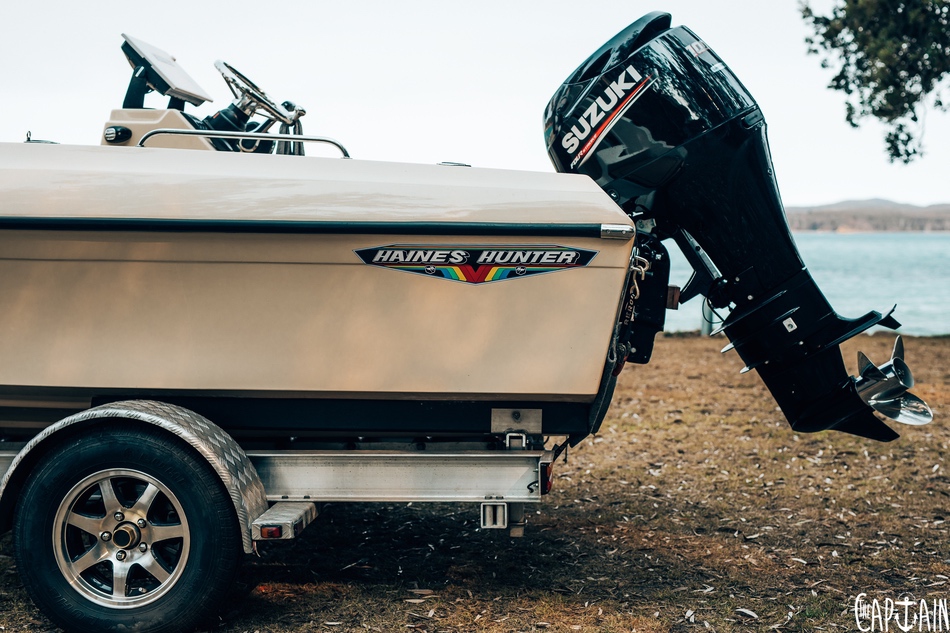
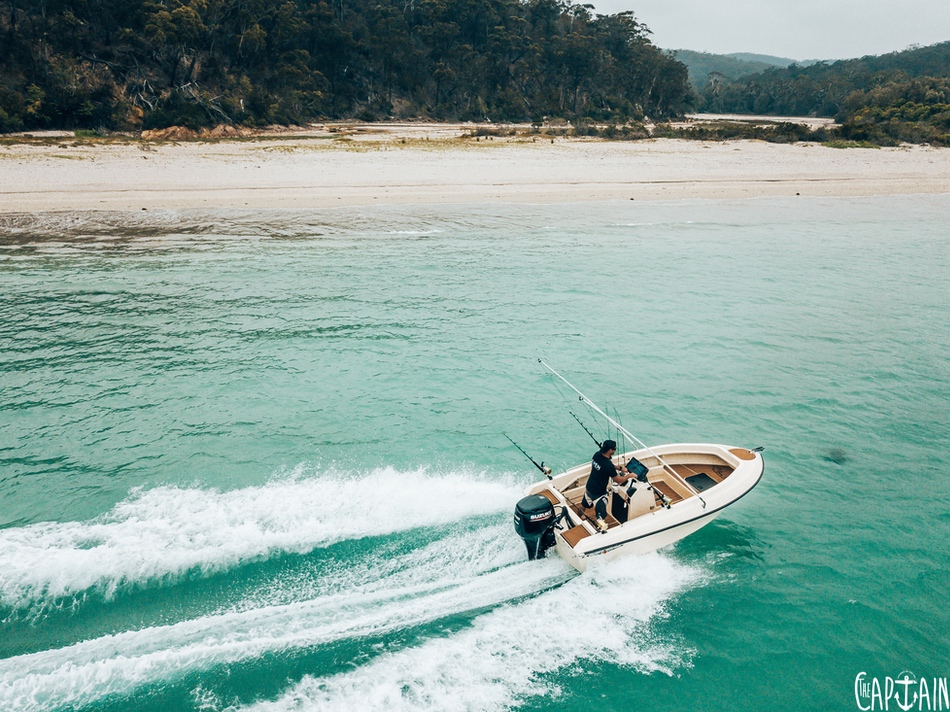
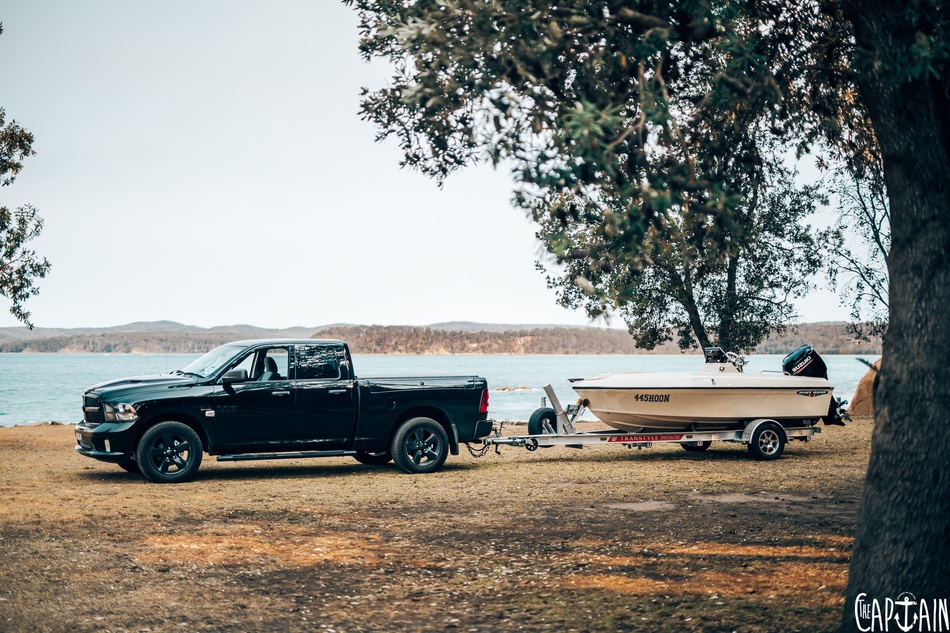
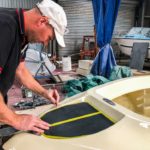
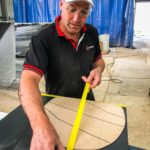
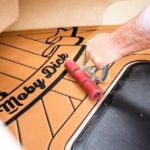
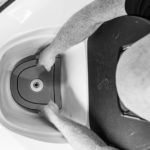
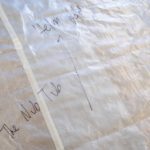
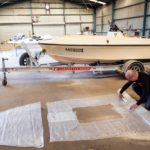
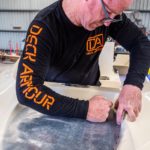
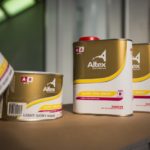
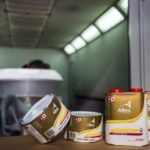
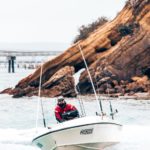
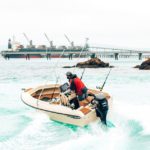
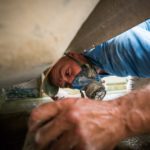

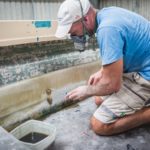
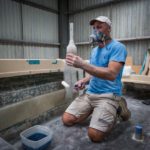
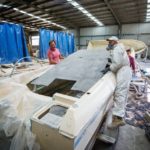
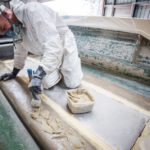
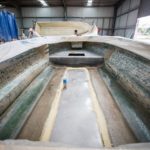
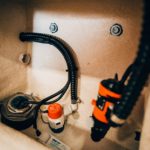
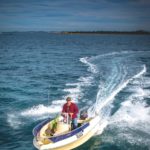
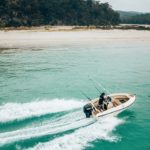
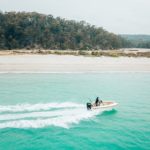
Recent Comments